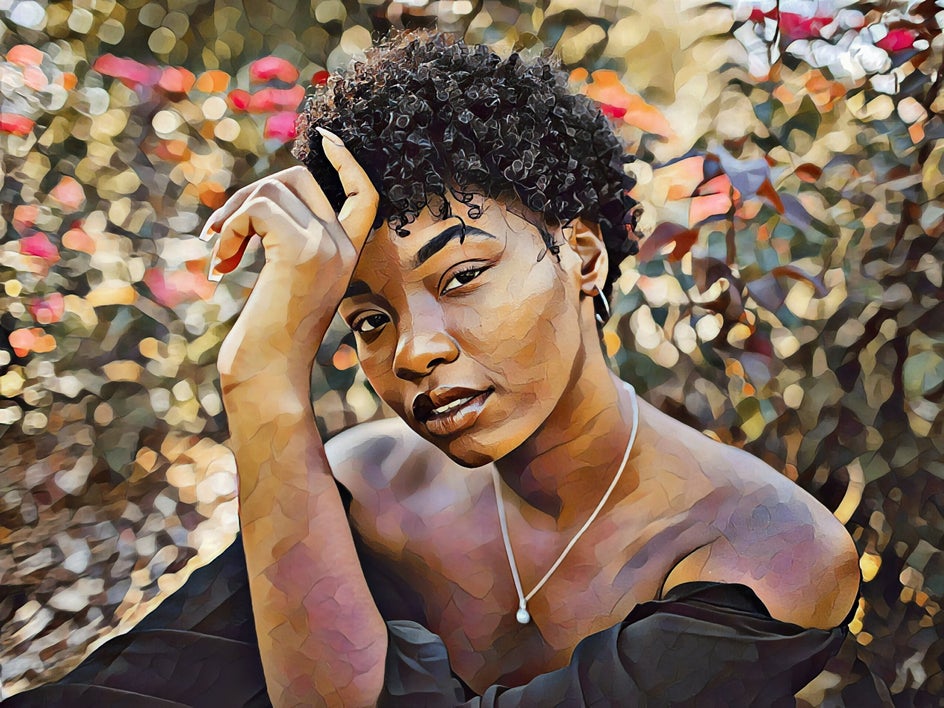Newly Curated Inventory of Oil Paintings for Sale
Newly Curated Inventory of Oil Paintings for Sale
Blog Article
Checking out All Regarding Oil Paints: A Guide to Comprehending Their Charm and Worth
Oil paints have mesmerized target markets for centuries, offering a glance into the imaginative proficiency of various ages. Their rich history is intertwined with innovative strategies and profound psychological expression. Comprehending the materials and methods behind these artworks can enhance gratitude. Furthermore, the marketplace for oil paints presents chances for enthusiasts and investors alike. As one discovers this fascinating globe, the inquiry develops: what makes an oil painting genuinely valuable?
The History of Oil Paint: A Trip Via Time
Oil paint has origins that date back to ancient times, it really flourished during the Renaissance, when musicians discovered its convenience and rich color possibility. Early examples can be mapped to the 7th century, with techniques progressing notably throughout cultures. The tool became famous in Northern Europe in the 15th century, especially through the works of artists like Jan van Eyck, that pioneered its usage for detailed realism and vivid colors. This period marked a departure from tempera paints, enabling for better deepness and structure. As oil paint spread, it affected countless musicians, resulting in work of arts by prominent figures such as Leonardo da Vinci and Rembrandt. The medium's heritage proceeds, forming the art world well into contemporary times.
Comprehending Oil Repaints: Products and Techniques
As artists discover the globe of oil paints, they experience a diverse variety of products and strategies that define this medium. The main parts of oil paint include pigments, which supply shade, and drying oils, such as linseed, that bind the pigments and facilitate application. Different ingredients can modify the paint's texture and drying out time, enhancing flexibility. Methods like glazing, where clear layers are developed, and impasto, which involves applying thick paint, enable various visual impacts. In addition, making use of brushes, combination knives, and even fingers can create distinct structures and surfaces. Recognizing these products and techniques enables musicians to fully reveal their creativity and accomplish the preferred effect in their artwork.
The Function of Shade in Oil Paintings
Color plays a crucial duty in oil paints, affecting both visual charm and emotional resonance. Recognizing color theory fundamentals, including the relationships between colors, can improve an artist's capability to share mood and ambience. Additionally, grasping color mixing techniques permits greater deepness and splendor in a painting's scheme.

Color Theory Fundamentals
Comprehending color concept is essential for musicians collaborating with oil paints, as it forms the structure for producing aesthetically engaging and unified make-ups. Color theory includes the research of how colors communicate, the color wheel, and the partnerships between primary, secondary, and tertiary colors. Musicians use corresponding shades to enhance contrasts and create focal factors, while similar colors promote unity and cohesiveness within a piece. Furthermore, the principles of cozy and great colors affect the perception of depth and area in a paint. Understanding these concepts allows musicians to adjust shade properly, directing the visitor's eye and connecting their desired message. Proficiency of shade concept ultimately enhances a musician's capability to convey emotions and ideas through their job.
Emotional Influence of Shade
The emotional influence of shade in oil paintings plays an essential duty in just how visitors attach and view with artwork. Colors stimulate certain feelings and state of minds, affecting the customer's mood. For instance, cozy tones like reds and oranges can create a feeling of warmth and power, while awesome tones such as blues and eco-friendlies typically stimulate calmness or self-contemplation. Artists strategically select color palettes to improve narrative components, assisting the target market's emotional journey. The saturation and comparison of shades even more enhance these effects, attracting interest and creating emphasis. Inevitably, the interaction of shades in oil paints not just enhances their visual charm but likewise functions as an effective medium for psychological expression, enhancing the visitor's experience and analysis.
Shade Mixing Techniques
While many facets of oil painting add to the total structure, understanding shade blending methods is vital for accomplishing preferred effects and depth. Shade blending can be come close to with different techniques, consisting of the subtractive and additive procedures. Additive mixing entails integrating shades of light, while subtractive mixing depends on pigments, where colors mix to develop brand-new tones. Artists commonly make use of a minimal scheme to create unified jobs, recognizing the relationships in between primary, secondary, and tertiary shades. Strategies such as glazing and scumbling even more enhance depth and brightness. By masterfully mixing colors, an artist can evoke emotions, produce focal factors, and attain a feeling of realistic look, eventually boosting the paint's psychological and aesthetic effect.
Famous Oil Painters and Their Iconic Works

Renowned for their mastery of shade and method, oil painters have actually produced a few of one of the most popular artworks in background. Renowned musicians like Vincent van Gogh astounded target markets with his stirring brushwork in "Starry Evening," while Claude Monet's "Perception, Dawn" prepared for Impressionism. Leonardo da Vinci's "Mona Lisa" continues to be an enduring symbol of artistic brilliant, showcasing his skill in capturing human expression. On the other hand, Rembrandt's "The Evening Watch" highlights his ingenious use of light and darkness. Various other noteworthy numbers consist of Pablo Picasso, who revolutionized modern art with his vibrant experimentation in jobs like "Les get more info Demoiselles d'Avignon," and Georgia O'Keeffe, whose lively representations of landscapes and blossoms helped specify American innovation. Each musician's distinct style added considerably to the oil paint landscape.
Exactly how to Evaluate the Top Quality of an Oil Painting
Reviewing the high quality of an oil paint involves a cautious analysis of craftsmanship techniques, along with an evaluation of color and structure. Observing brushwork, layering, and the application of paint can reveal the artist's skill level. Additionally, the interplay of shades and the total arrangement of aspects contribute significantly to the paint's visual worth.
Evaluating Craftsmanship Strategies
A thorough assessment of workmanship techniques is crucial for figuring out the high quality of an oil paint. Critics should first analyze the application of paint; thick, distinctive brushstrokes might recommend a competent hand, while overly uniform applications might indicate a lack of deepness. oil paintings for sale. The layering method is additionally essential; the visibility of lusters and differed density can enhance brightness and complexity. In addition, the high quality of the products made use of, such as the canvas and pigments, plays a significant function in resilience and overall visual. Interest to information in aspects like sides and changes in between shades reflects the musician's commitment to their craft. Ultimately, these strategies contribute to the paint's emotional effect and market price, working as indicators of the artist's skill and intent
Analyzing Color and Structure
While reviewing the quality of an oil paint, one should concentrate on the interplay of color and make-up, as these components are fundamental to the art work's general effect. Shade options can establish and stimulate emotions state of mind; consequently, the artist's scheme ought to be examined for consistency and comparison. A well-balanced composition routes the audience's eye and creates a sense of unity. Artists frequently utilize methods like the policy of thirds or leading lines to boost aesthetic rate of interest. Furthermore, making use of light and darkness can add deepness, improving the three-dimensionality of the paint. Eventually, an effective oil painting weds shade and make-up, involving the visitor and welcoming a much deeper gratitude of the musician's vision and strategy.
Taking care of and Preserving Oil Paintings
Appropriate care and conservation of oil paints is important for keeping their honesty and durability. To safeguard these art work, it is important to display them far from straight sunshine, which can trigger fading and discoloration. Maintaining a steady environment with regulated temperature and moisture further help in avoiding damages. Cleaning up ought to be done gently making use of a soft, dry fabric, staying clear of any type of harsh chemicals that can damage the paint or varnish. Normal inspections for indicators of wear and tear, such as splitting or flaking, are advisable. When carrying or keeping oil paintings, appropriate extra padding and framework are needed to prevent physical damage. Ultimately, diligent treatment adds to the aesthetic charm and worth of oil paints gradually.
The Market for Oil Paintings: Accumulating and Investing
Comprehending the market characteristics for oil paintings is vital for enthusiasts and capitalists alike. The value of these artworks is affected by different aspects, including the artist's track record, historic value, and present fads. Enthusiasts usually seek pieces that reverberate directly while considering possible appreciation in value. Galleries and public auctions function as key locations for acquiring and marketing, with costs changing based upon demand and rarity. Buying oil paints requires research right into the market, as well as an understanding of authenticity and provenance. Additionally, emerging artists may offer chances for significant returns, while established names can regulate high costs. Overall, a strategic approach to accumulating can generate both visual satisfaction and economic benefits.

Frequently Asked Questions
What Are the Ecological Impacts of Oil Paint Materials?
The ecological effects of oil paint products consist of the launch of unstable organic compounds (VOCs), hazardous waste generation, and resource removal for pigments. These aspects add to contamination and environmental deterioration, raising concerns among ecologically aware artists and consumers.
Just How Do Various Canvases Impact Oil Painting Results?
Various canvases influence oil painting results significantly. Absorbency, surface area, and texture top quality can modify paint application, drying out times, and shade vibrancy. Artists typically choose specific canvases to accomplish desired results and enhance their artistic expression.
Can Oil Paintings Be Brought Back if Damaged?
If damaged, Oil paintings can indeed be recovered. Expert conservators make use of various methods to fix tears, clean surfaces, and address discoloration, making certain that the art work keeps its original beauty and worth for future generations.
What Are the Signs of an Initial Oil Paint?
The indicators of an original oil paint include visible brush strokes, structure variations, and an uneven canvas weave (oil paintings for sale). In addition, authenticity may be confirmed through provenance, signatures, and the presence of a varnish layer special to oil tools
Just How Has Modern Technology Influenced Modern Oil Paint Techniques?
Modern technology has actually considerably affected modern-day oil painting techniques by introducing digital devices for planning, enhanced materials for texture and long life, and on the internet systems for sharing and marketing art, thus broadening artists' innovative possibilities and audience reach. Oil paint has origins that date back to ancient times, it truly thrived during the Renaissance, when artists uncovered its versatility and rich shade possibility. The psychological effect of color in oil paints plays an essential function in how visitors connect and perceive with artwork. While many aspects of oil painting contribute to the overall make-up, mastering color mixing techniques is necessary for achieving wanted results and depth. Reviewing the top quality of an oil paint involves a careful assessment of workmanship strategies, as well as an evaluation of color and composition. While assessing the high quality of an oil painting, one should concentrate on the interaction of color and composition, as these elements are fundamental to the artwork's overall impact.
Report this page